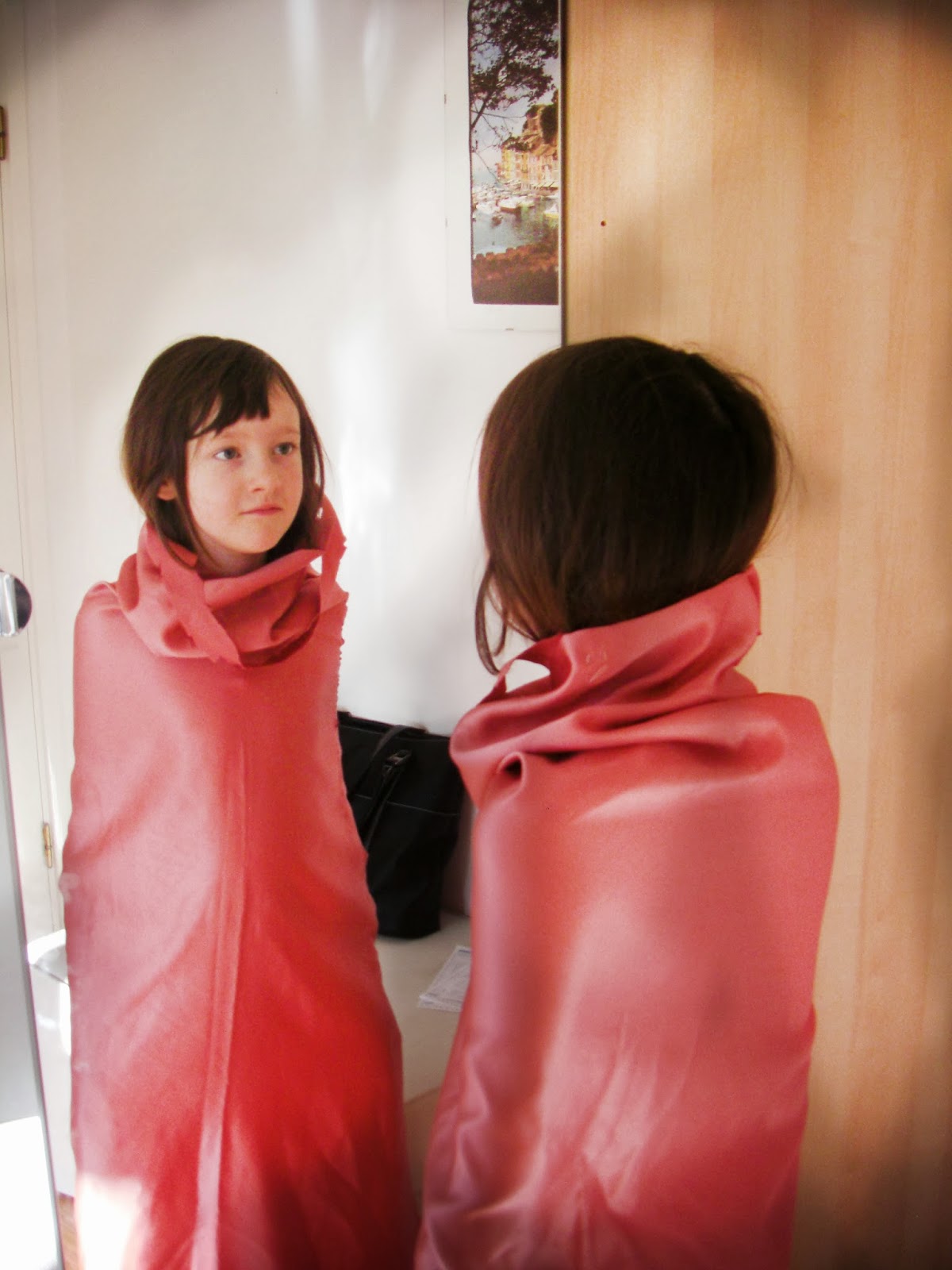How & Why

How and why I became who I am (at least sewing wise!). The first time I sewed I was five and we lived in Lille, France. I remember being determined to make a blanket for the mice I was convinced lived in our basement. Sitting at a table with a glass of milk and a stack of digestive cookies (heaven on earth!) to keep me company, I slowly plodded my way through. I sat for hours in our garage and stitched together four square pieces of felt with inch-thick stiches. I cut a star out of the felt and slapped it on with more sloppy stiches. Sadly, the mice never used it and to this day I doubt their existence. Years later when we were living in Sweden I found the blanket and went over my first ever stiches with the industrial highways of a sewing machine's ridged stiches.The most challenging thing for me at first was threading the needle. I would finally manage to stab it through the eye after licking it multiple times, only to have the thread come out again because I pulled too hard. Then my mother showed me how to double up the thread! I was amazed at how easy it was from then on!
My next challenge came when I was seven. I was going to a Waldorf school and one day came across a book on how to make Waldorf dolls. I instantly fell in love! I went home and made one without instructions except the pictures I had seen. That worked out fine and I’ve been making them ever since. Just kidding, it doesn’t work that way! I had neither the right materials, the right pattern, nor the correct method of assembly. It looked, well, pretty far from the real thing. (Never be discouraged if a project doesn’t happen the way you want it to the first time.) But being seven, I loved it anyway. For the time being, at least.
Eventually I wanted to make another, but this time determined to do it right. I sought the help of a very good friend whose three older sisters and mother taught her the ropes before she could walk. They were a quintuple-pack of sewing savvy Swedes! I borrowed material and advice from her and brought home the book that had so successfully wedded me to these dolls. Despite all of that, I made one fatal mistake that caused yet another catastrophic failure. I had forgotten to read how to place the pattern. The fabric used to sew Waldorf dolls is stretchy, and unless you lay the patterns lengthwise along the grain of the fabric the limbs will be octopus-esque.

Then I got my first sewing machine from Santa, funny, I thought he only made toys. At first, I was too scared to actually put the peddle to the metal and instead cranked the handle at the side of my sewing machine. I had sewn the entire bottom half of the doll before finally lifting the clutch and- it fell apart in my hands. I didn’t know a thing about my sewing machine and it took some puzzling to figure out what was wrong. It was the tension. When all of the kinks had been worked out I had a doll with very fat legs and very skinny arms but no mean amount of kiddy love coming its way anyhow.
I felt like I had finally done it, so after two more dolls of varying quality just because I felt like it, I moved on. I made several smaller dolls, including a tiny companion for my brother (and a wife to keep the companion company), a rag doll, and a bunt doll (who were, obviously, best buddies).
Stuffed animals were the new ‘in’. I made two cats, one more successful than the other. Two strange levitating horse-creatures with no legs. A beautiful fluffy white bunny (whose glass eyes fell out, lovely right?) and a lamb of the same material.
A friend and I also aspired to create our own designer company. We made an orange fleece skirt and a leotard that could be folded over to look like a very short dress or a leotard/shorts ordeal.
On my own I made an embroidered handkerchief (with fake initials to boot) and a beautiful full-length dress with flared short-sleeves.
Before the success of that dress I had made a hilarious first attempt with another material. It didn’t quite fit, to put it gently.
My mother and I made a matching vest and skirt from the most beautiful silk for me to wear to my first school dance. Truth be told, she did most of the work.
Next I made four adorable puppies and had a terry-cloth cat phase before being absorbed into the creative equivalent of porridge: the American school system. 


Or as American as it gets in China. I didn’t sew anything for two years, two years! Until I went to visit in Sweden and was gifted with a Waldorf doll that had all but hair. I stayed up all night embroidering a handkerchief to give in return and putting hair on my bald present.
That kicked me into action and I began churning out doll clothes and dolls once more. And that brings you pretty much up to the present, for the rest of what I’ve made since then visit the ‘stitches’ or ‘sweets’ pages on my blog or email me with pestering questions at littleisland2017@gmail.com.







































